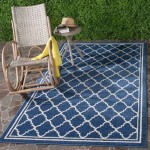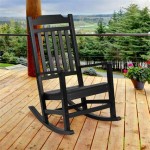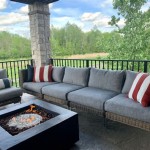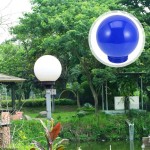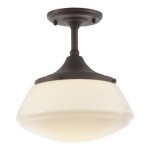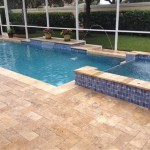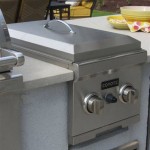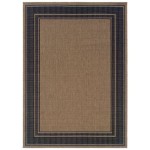Outdoor Shower With Changing Area: A Comprehensive Guide
An outdoor shower with a changing area offers a unique and practical addition to any property, providing a convenient space to rinse off after swimming, gardening, or other outdoor activities. This structure combines the functionality of a shower with the privacy and comfort of a dedicated changing space, enhancing the overall outdoor living experience. Understanding the various design considerations, material options, and construction techniques is crucial for creating an outdoor shower that is both aesthetically pleasing and highly functional.
Design Considerations for Outdoor Showers with Changing Areas
The design phase is perhaps the most critical aspect of planning an outdoor shower with a changing area. It involves considering several factors, including location, size, privacy, drainage, and aesthetics. Each element contributes to the overall usability and integration of the structure within the landscape.
Location: The ideal location balances accessibility and privacy. It should be conveniently situated near the pool, garden, or back entrance of the house to minimize the distance one must travel. Simultaneously, the location should be chosen to maximize privacy from neighbors and the street. Existing landscaping, such as trees and shrubs, can provide natural screening. Proximity to existing plumbing lines is also a crucial consideration to reduce installation costs and complexity. South-facing locations generally receive the most sunlight, which can aid in water heating and drying the structure. However, in hotter climates, an east-facing or shaded location might be preferable to avoid excessive heat.
Size and Layout: The size of the shower and changing area should be adequate to comfortably accommodate users. A minimum shower area of 3 feet by 3 feet is generally recommended, allowing sufficient space to move freely. The changing area should be large enough to allow individuals to change clothes without feeling cramped. Benches or shelves for storing towels and toiletries should also be factored into the overall size and layout. A separate, enclosed changing area may be preferable for increased privacy, depending on the degree of exposure and the preferences of the homeowners. Consider the user experience when planning the layout. The transition from shower to changing area should be seamless and intuitive. Also, consider accessibility, especially if anyone with mobility issues will be using the shower.
Privacy: Constructing an outdoor shower naturally requires considering privacy. It's not just about location; the design itself needs to incorporate features which screen the occupant. Solid walls offer the highest level of privacy, but they can also block natural light and ventilation. Lattice panels, slatted wood screens, or strategically placed plants can provide a balance between privacy and openness. Consider the viewing angles from neighboring properties and public areas when determining the height and placement of screening elements. Curtains or fabric screens can also be used as a flexible and temporary privacy solution. The height of the surrounding fence or wall should extend to at least six feet to effectively block views from most angles.
Drainage: Proper drainage is essential to prevent water from pooling around the shower area and causing damage to the surrounding landscape. A sloped shower floor leading to a drain is the most common solution. The drain should be connected to a drainage system that can handle the volume of water generated during showering. Options include connecting to the existing sewer system, using a dry well, or creating a gravel-filled drainage pit. The type of soil and local regulations will influence the choice of drainage system. It is also essential to consider the impact of the shower water on nearby vegetation. Using biodegradable soaps and shampoos can help minimize any potential harm to plants.
Aesthetics: The outdoor shower should complement the existing architectural style and landscape design. The choice of materials, colors, and finishes should blend seamlessly with the surrounding environment. Natural materials such as wood, stone, and bamboo can create a rustic and organic feel, while metal and concrete can lend a more modern and contemporary look. Consider incorporating decorative elements such as planters, lighting, and outdoor art to enhance the overall aesthetic appeal. Vertical gardens or climbing plants can add a touch of greenery and create a more inviting atmosphere.
Materials and Construction of Outdoor Showers
Selecting the right materials is crucial for ensuring the durability, longevity, and aesthetic appeal of an outdoor shower with a changing area. The chosen materials should be weather-resistant, low-maintenance, and compatible with the local climate. Similarly, employing sound construction techniques is paramount to ensuring the structural integrity and longevity of the outdoor shower.
Wood: Wood is a popular choice for outdoor showers due to its natural beauty and versatility. However, not all wood species are suitable for outdoor use. Cedar, redwood, teak, and pressure-treated lumber are naturally resistant to rot, decay, and insect infestation. These woods can withstand exposure to moisture and sunlight without significant damage. Regular sealing or staining is recommended to protect the wood from weathering and maintain its appearance. The choice of wood species will depend on budget, aesthetic preferences, and availability in the local area. Consider using reclaimed wood for an eco-friendly and unique look. Wood should be properly treated and sealed before installation to prevent moisture absorption and warping.
Metal: Metal is another durable and weather-resistant option for outdoor showers. Stainless steel, aluminum, and powder-coated steel are commonly used materials. Stainless steel is highly resistant to corrosion and rust, making it an excellent choice for wet environments. Aluminum is lightweight and easy to work with, while powder-coated steel offers a wide range of color options and provides added protection against corrosion. Metal structures can be sleek and modern in appearance. Consider using recycled metal for an environmentally friendly option. Metal components should be properly grounded to prevent electrical hazards.
Stone and Concrete: Stone and concrete are durable and aesthetically pleasing options for outdoor showers. Natural stone, such as flagstone or river rock, can create a rustic and organic feel. Concrete can be molded into various shapes and sizes, offering design flexibility. Both materials are highly resistant to weathering and require minimal maintenance. Stone and concrete can be used for flooring, walls, and decorative elements. Sealing the stone or concrete is recommended to prevent staining and water damage. Ensure that the foundation is properly prepared to support the weight of the stone or concrete structure.
Plumbing: Plumbing considerations encompass material choices, layout, and compliance with local codes. Copper, PEX, and PVC are the most commonly used materials for outdoor shower plumbing. Copper is durable and resistant to corrosion, but it can be more expensive than other options. PEX is a flexible and cost-effective alternative that is easy to install. PVC is a lightweight and affordable option, but it may not be as durable in cold climates. The plumbing layout should be designed to minimize water waste and ensure adequate water pressure. Installing a mixing valve allows for temperature control and prevents scalding. All plumbing work should comply with local building codes and regulations. Consider using a low-flow showerhead to conserve water.
Construction Techniques: Proper construction techniques are essential for ensuring the structural integrity and longevity of the outdoor shower. The foundation should be level and stable to prevent settling or shifting. The walls should be properly supported and braced to withstand wind and other environmental forces. The shower floor should be sloped towards the drain to prevent water from pooling. All connections should be watertight to prevent leaks. Consider using stainless steel hardware to prevent corrosion. Regular maintenance, such as cleaning and sealing, will help extend the lifespan of the outdoor shower.
Enhancing the Outdoor Shower Experience
Beyond the basic structure, several features can enhance the functionality and enjoyment of an outdoor shower with a changing area. These enhancements range from practical additions like hot water systems to aesthetic details like integrated lighting.
Hot Water System: A hot water system can significantly enhance the comfort and usability of an outdoor shower, especially in cooler climates. Options include connecting to the existing household hot water system, using a tankless water heater, or installing a solar water heater. Connecting to the existing system is the simplest and most cost-effective option, but it may require running new plumbing lines. Tankless water heaters provide on-demand hot water and are energy-efficient, but they require a dedicated gas or electric line. Solar water heaters are an environmentally friendly option, but they require a sunny location and may not provide sufficient hot water on cloudy days. Consider the energy efficiency, cost, and environmental impact of each option when making a decision. Insulating the hot water pipes can help reduce heat loss and improve energy efficiency.
Lighting: Integrating lighting into the outdoor shower area can enhance safety and create a more inviting atmosphere, especially during evening hours. Options include recessed lighting, landscape lighting, and string lights. Recessed lighting provides a clean and modern look, while landscape lighting can highlight architectural features and landscaping elements. String lights can create a festive and whimsical ambiance. Ensure that all lighting fixtures are waterproof and suitable for outdoor use. Consider using solar-powered lighting to reduce energy consumption. Motion sensor lights can provide added security and convenience.
Storage and Amenities: Integrating storage solutions into the changing area can help keep the space organized and clutter-free. Options include built-in shelving, benches with storage compartments, and wall-mounted hooks. Provide a designated space for towels, toiletries, and swimwear. Consider adding amenities such as a soap dispenser, shampoo holder, and mirror. A waterproof Bluetooth speaker can provide entertainment while showering. Incorporate details which increase convenience, such as a small shelf near the showerhead for soap.
Landscaping: Thoughtful landscaping around the outdoor shower can enhance privacy, create a sense of enclosure, and add to the overall aesthetic appeal. Plant shrubs, trees, or climbing plants to create a natural screen. Use decorative stones, pebbles, or mulch to define the shower area and prevent mud accumulation. Consider adding a small garden or potted plants to bring color and life to the space. Choose plants that are tolerant of moisture and shade. Ensure that the landscaping does not obstruct drainage or create a safety hazard. Regular pruning and maintenance will help keep the landscaping looking its best.
By carefully considering these design elements, material options, and construction techniques, one can create an outdoor shower with a changing area which is both functional and aesthetically pleasing. The result is a valuable addition to any outdoor living space, enhancing comfort and enjoyment for years to come.

Outdoor Shower Enclosure Cedar Showers Kits Company

Cedar Outdoor Shower Deluxe House Mount

Cedar Outdoor Shower Stalls Enclosures Stonewoodproducts Com
:max_bytes(150000):strip_icc()/Pringlepoolhouseoutdoorshower-d6ea72c629634f59b3c5df10df023953.jpg?strip=all)
34 Outdoor Shower Ideas For Your Backyard Or Surf S

Outdoor Shower Enclosure Kits Landscaping Network

Great Outdoor Shower W Room For Changing

Outdoor Showers Shower Kits Plans Enclosures On Sale

Double Stall Outdoor Shower Enclosures And Changing Room Toddpod

That Flipping Couple

Outdoor Showers Designs Enclosures Plans Ideas

